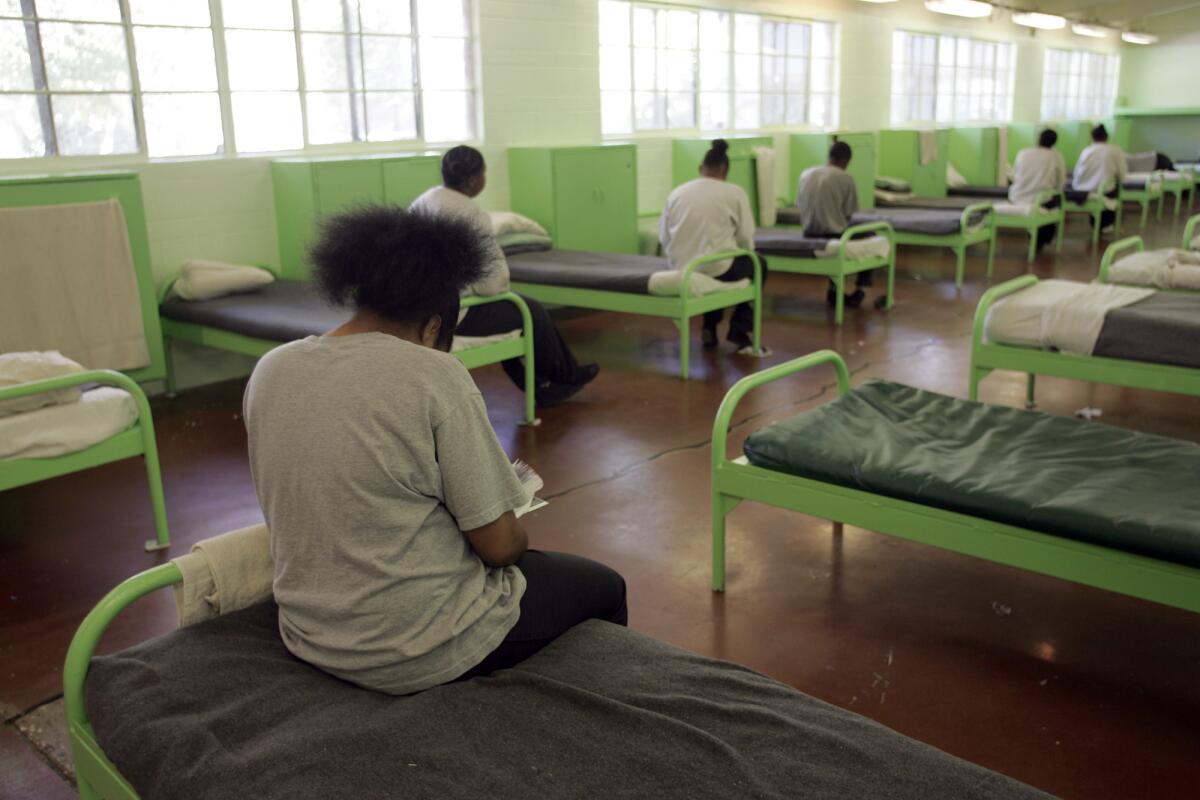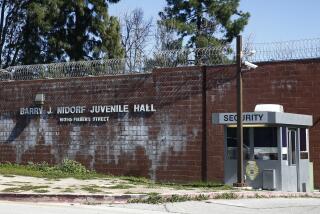1 in 3 L.A. County youth offenders is re-arrested within year, study finds

- Share via
It took $400,000 and nearly four years of work to uncover, but experts now know a basic fact about Los Angeles County’s juvenile delinquency system: One-third of probationers are re-arrested within a year of their release.
“The county has the biggest child prisons in the country and they couldn’t tell you if the kids got fixed,” said Connie Rice, the civil rights attorney who leads the Advancement Project, the nonprofit that funded the study.
The study, led by researcher Denise C. Herz at Cal State L.A., also sought to document the chaotic home lives of the children who end up in the county’s detention camps, group homes, psychiatric hospitals and community-based placements.
Half of the children come from families who survive on public assistance. A third come from families with substance abuse. Two-thirds have parents or siblings who have been arrested or incarcerated. And one out of five come from gang-involved families.
“We are doing a better job keeping these kids in the community, but if we are not addressing some of those chaotic factors that make their lives unstable, they are more likely to come back to camps or suitable placement,” Herz said.
The youth themselves suffered from mental illness at an alarming rate, with 92% receiving some kind of diagnosis. Half also had problems with substance abuse, especially alcohol and marijuana.
Experts said they were somewhat encouraged, however, that even more children are not re-arrested, given the reality that the youth come from such troubled backgrounds and that many had been arrested numerous times before coming into custody.
“I honestly thought the rate was going to be higher,” Rice said.
But researchers lamented that the L.A. County Probation Department’s data collection system was in disarray and unable to yield basic information needed to ensure that services for the children are properly organized. Data on the length and effectiveness of treatment programs, for instance, remains a mystery.
The information in the report was time-consuming to compile, they said, because they had to read narrative-style notations in 500 case files for children under county supervision in 2011.
Probation Chief Jerry Powers acknowledged that no current proposals exist to significantly improve data monitoring. “I couldn’t even begin to guess how much it would cost,” he said.
But researchers said it wasn’t just logistical obstacles that stood in their way; they said they also confronted a culture in the county that was reluctant to compile and analyze data.
The study, Rice said “was frightening to people. But since it was our money, they couldn’t shut it down, even though they tried.”
Powers acknowledged “there was more than one person who said ‘they are just going to beat you over the shoulder with this information’.”
But once the data was analyzed, he said he was encouraged by the results because the youth in the study had experienced so much trauma and so many previous arrests.
“This is really the first group of kids coming out of the reformed camp system after the Department of Justice came in to monitor,” he said. “If this recidivism number holds, that’s pretty remarkable.”
Six years ago, the U.S. Department of Justice cited the county’s camps for misuse of force against many of the youth, but Powers said the county is now in compliance with the federal government’s mandated reforms.
More to Read
Sign up for Essential California
The most important California stories and recommendations in your inbox every morning.
You may occasionally receive promotional content from the Los Angeles Times.











